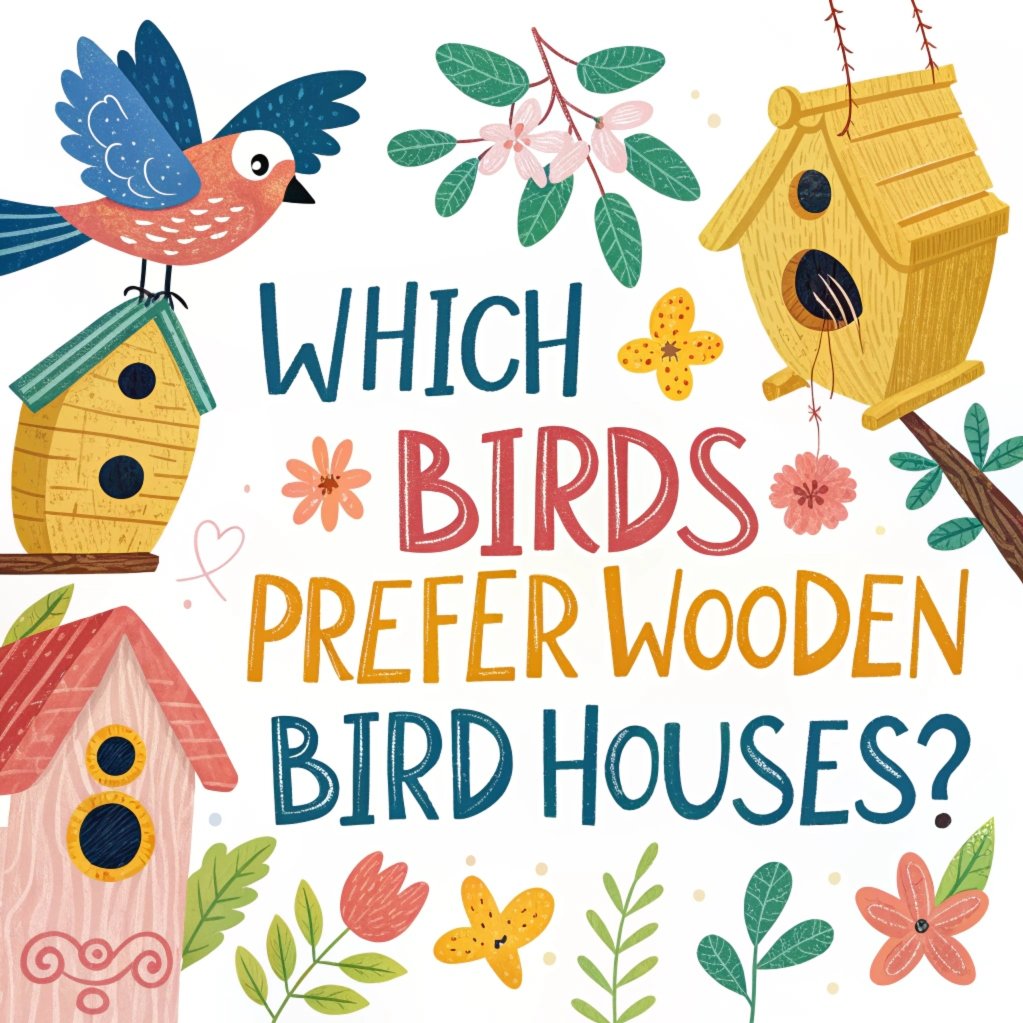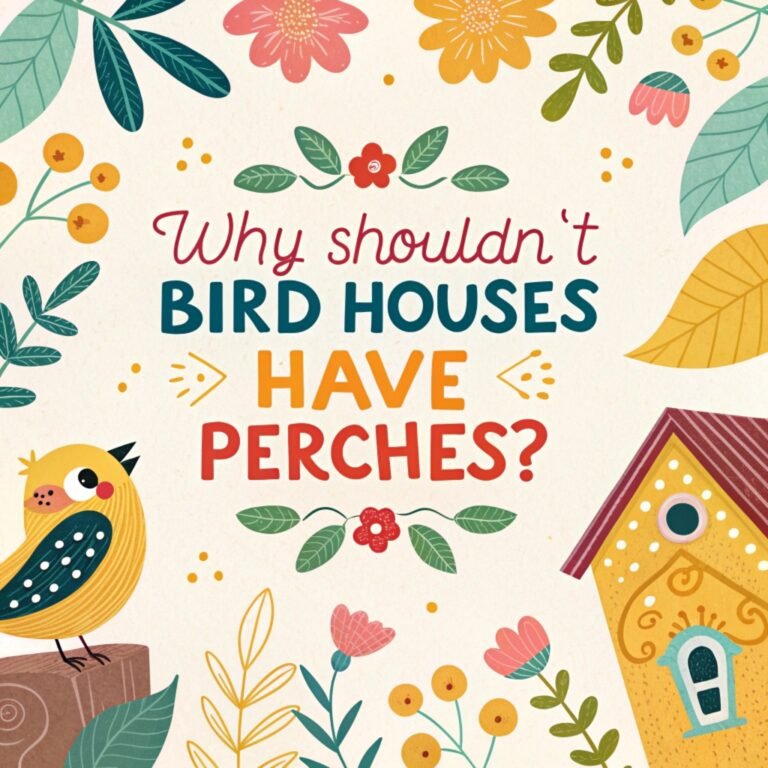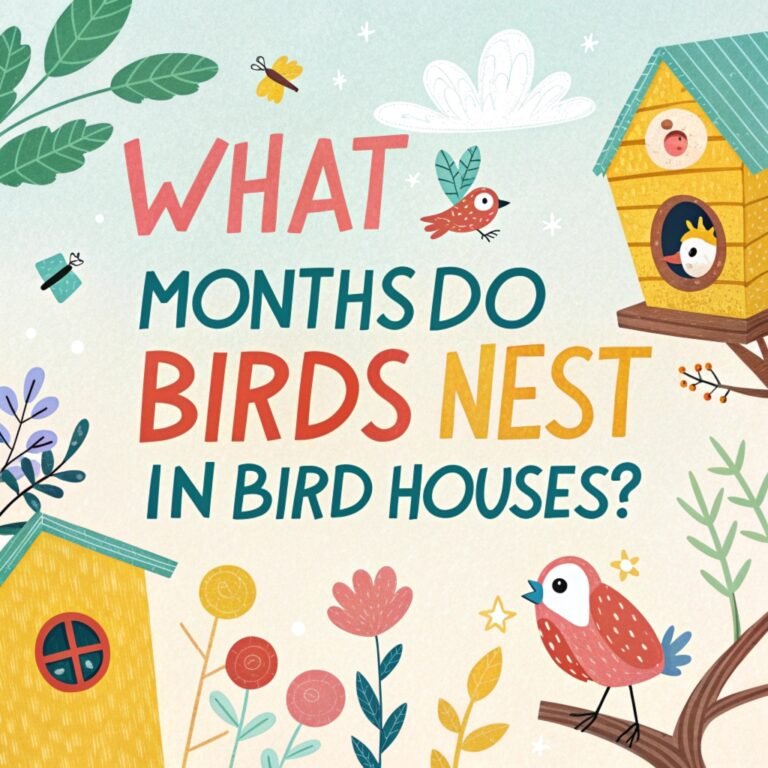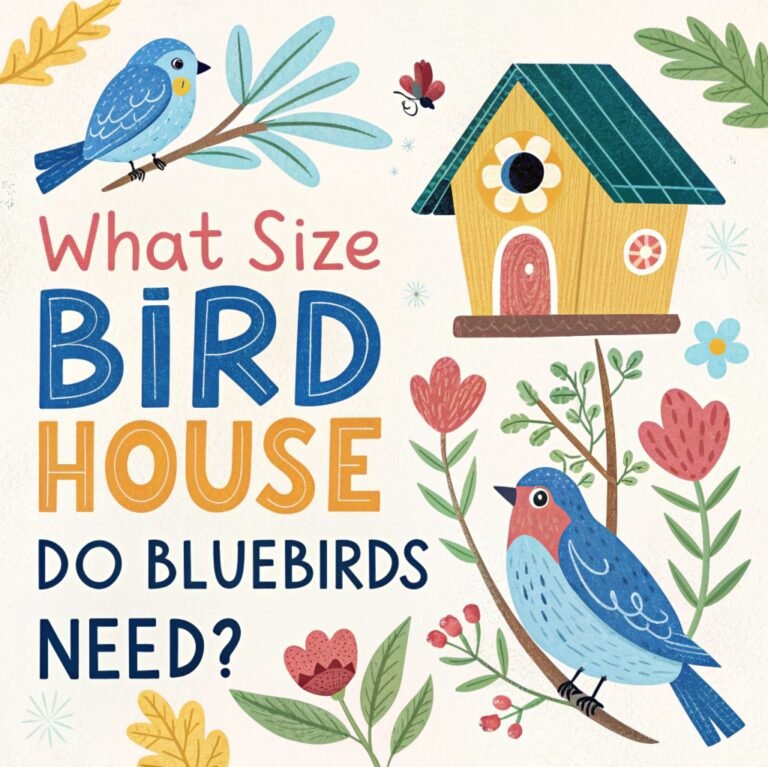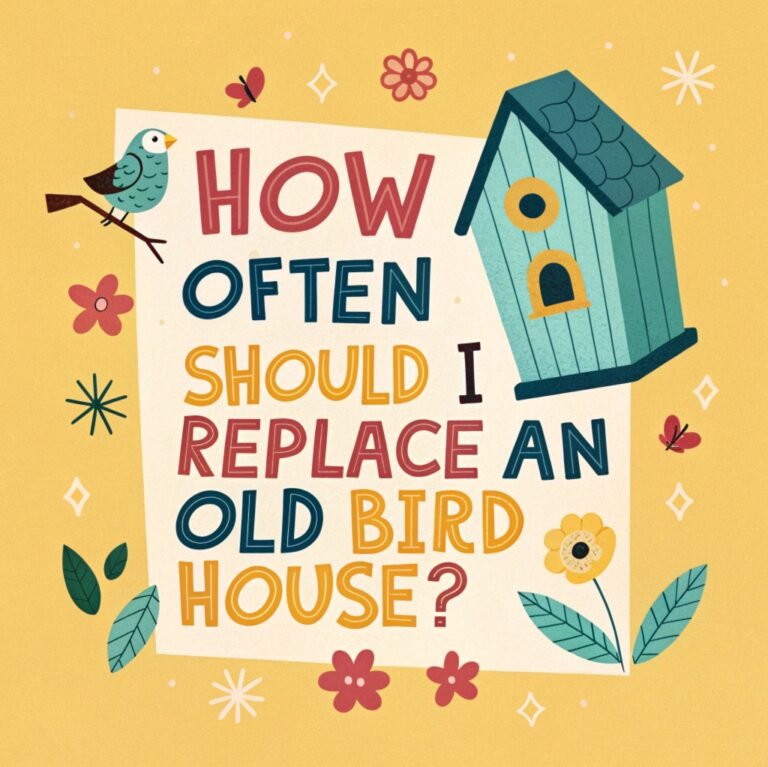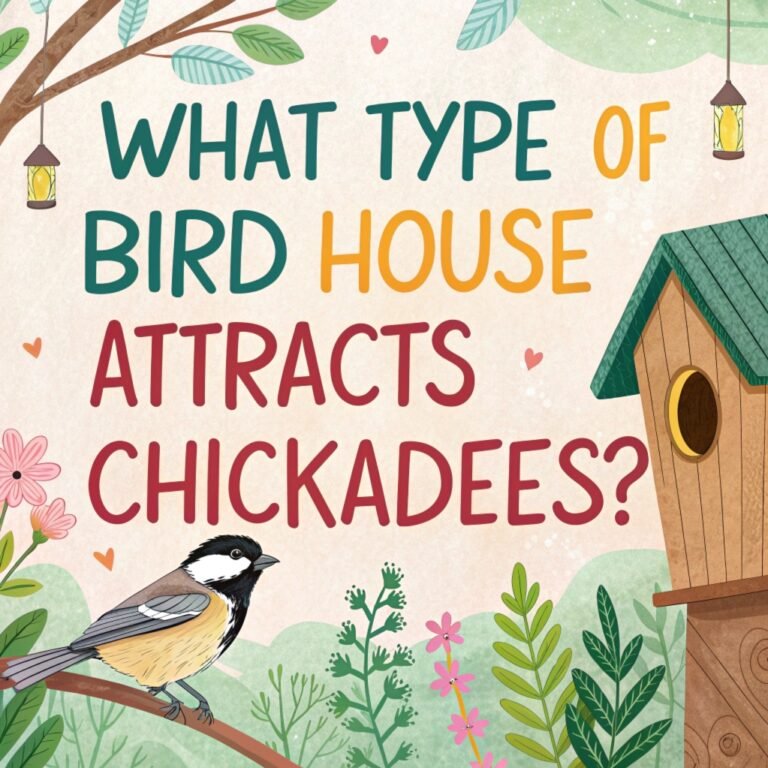Which Birds Prefer Wooden Bird Houses? – Exploring the Avian Species That Prefer Wooden Bird Houses for Nesting
Among the trees and shrubs, you spot a charming wooden bird house, its rustic appeal not just catching your eye, but also attracting a diverse array of feathered friends.
Imagine stepping into your backyard, the air filled with the melodious chirping of birds as they flit about, searching for the perfect place to call home.
Have you ever wondered which birds are most likely to take up residence in these wooden sanctuaries?
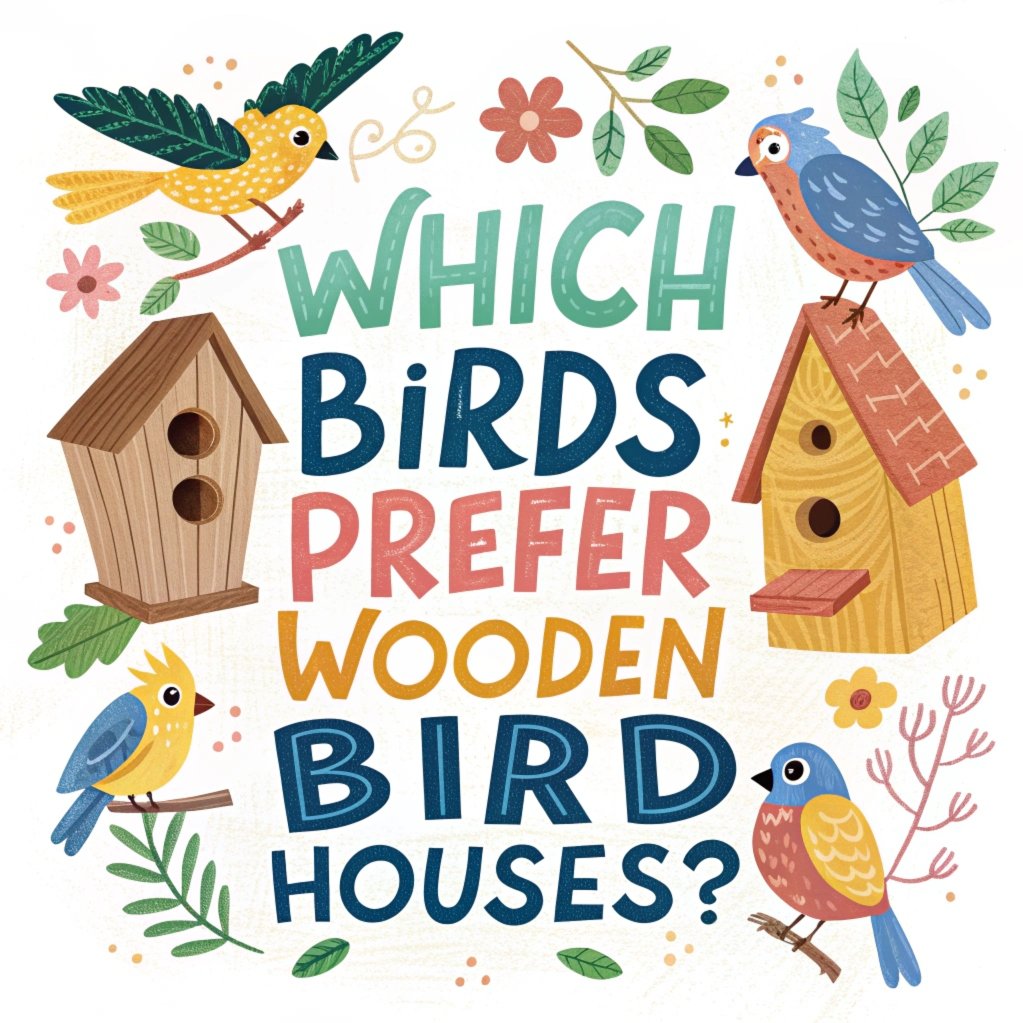
Key Takeaways:
- Wooden bird houses are highly attractive to many bird species due to their similarity to natural tree cavities.
- The porous nature of wood provides excellent ventilation and insulation, creating an ideal nesting environment.
- Bluebirds are iconic wooden house dwellers, with specific preferences for house dimensions and placement.
- Small birds like chickadees, titmice, and wrens are enthusiastic users of wooden bird houses, each with their own size requirements.
- Tree Swallows prefer wooden houses near open areas or water bodies.
- Nuthatches appreciate houses with rough interior walls to mimic natural tree cavities.
- Some woodpecker species will use wooden houses, though they typically require larger dimensions.
- Purple Martins are colonial nesters that can thrive in multi-compartment wooden structures.
- Larger wooden houses can attract small owls and raptors like American Kestrels.
- Wood Ducks are unique among waterfowl in their willingness to use wooden nesting structures near water.
- Proper construction and regular maintenance are crucial for the long-term success of wooden bird houses.
- Houses should be built with untreated wood and include features for proper ventilation and drainage.
- Annual cleaning and repairs help ensure wooden bird houses remain safe and attractive to birds.
- While some birds readily accept wooden houses, others may still prefer natural cavities or have specific nesting requirements.
The Allure of Wooden Bird Houses for Our Feathered Friends
Wooden bird houses have long been a favorite among many bird species, offering a natural and comfortable nesting environment.
These structures provide shelter, protection, and a safe haven for birds to raise their young. The porous nature of wood allows for proper ventilation and insulation, creating an ideal microclimate for nesting birds.
Many species are drawn to wooden bird houses due to their similarity to natural tree cavities, which these birds would typically seek out in the wild. The texture and feel of wood also appeal to birds, as it allows them to grip and move easily within the structure.
Additionally, wood’s ability to regulate temperature and moisture makes it an excellent choice for bird houses, ensuring the comfort and safety of both adult birds and their offspring throughout the nesting season.
Bluebirds: The Iconic Wooden House Dwellers
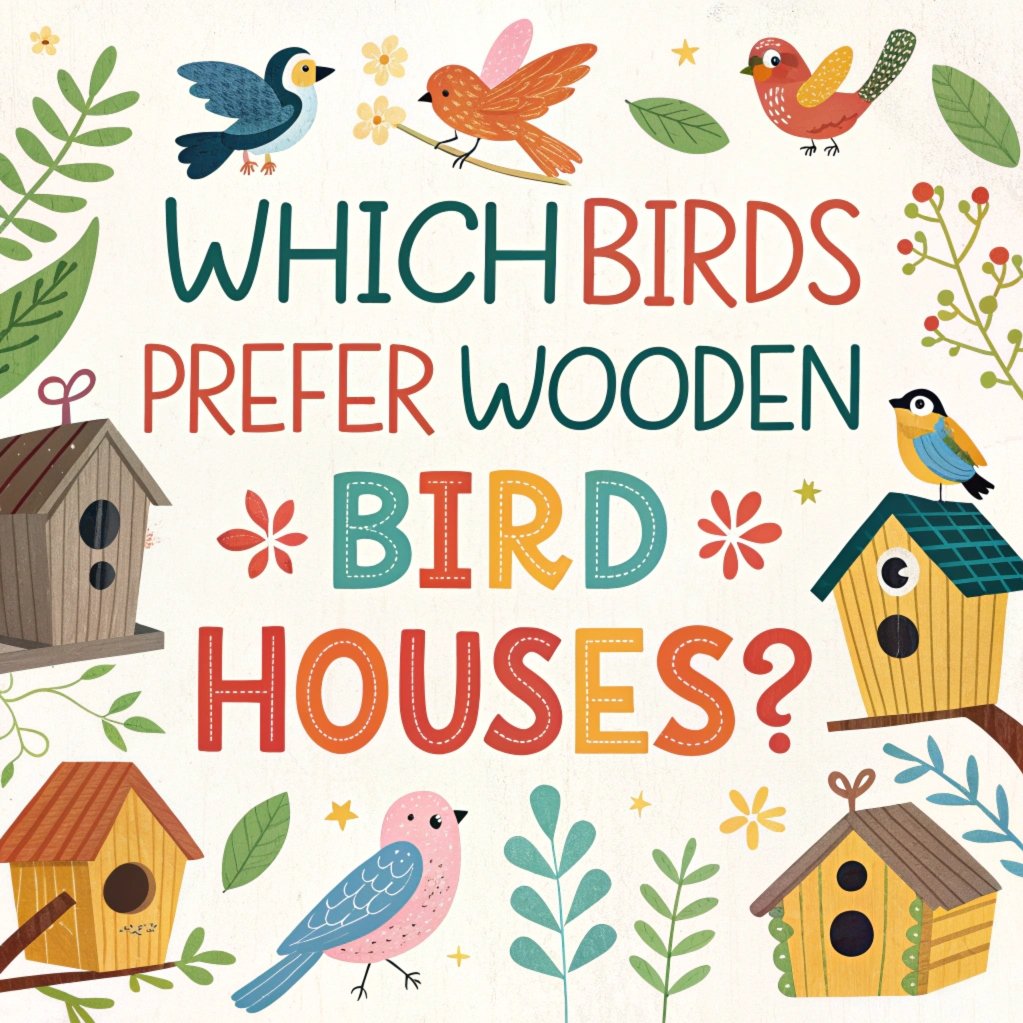
Bluebirds, including Eastern, Western, and Mountain species, are perhaps the most well-known occupants of wooden bird houses.
These beautiful birds have become synonymous with backyard conservation efforts, largely due to the success of bluebird trails and dedicated nesting box programs. Bluebirds prefer wooden houses with specific dimensions, typically featuring a 4×4 inch floor and a depth of 8-12 inches.
The entrance hole should be about 1.5 inches in diameter and placed 6-10 inches above the floor. Bluebird houses are best positioned 4-6 feet high in open areas, facing away from prevailing winds. These birds are partial to houses painted in earth tones or left in their natural wood state.
The popularity of bluebird houses has contributed significantly to the recovery of bluebird populations, which had previously declined due to habitat loss and competition from invasive species.
Chickadees and Titmice: Small Birds with a Big Preference for Wood
Chickadees and titmice are small, charming birds that readily accept wooden bird houses. These species prefer houses with a 4×4 inch floor and a depth of 8-10 inches. The entrance hole should be 1.25 inches in diameter and placed 6-8 inches above the floor.
Both chickadees and titmice appreciate houses placed 4-15 feet high, often in areas with some tree cover or near the edge of wooded areas. These birds are known to add their own soft nesting material to the house, but they also appreciate a layer of wood shavings on the bottom.
Chickadees and titmice are year-round residents in many areas, making them delightful backyard companions. Their preference for wooden houses stems from the material’s ability to mimic natural tree cavities, which these birds would typically use for nesting in the wild.
Wrens: Enthusiastic Occupants of Wooden Abodes
Wrens, particularly House Wrens and Carolina Wrens, are enthusiastic users of wooden bird houses. These small, energetic birds prefer houses with a 4×4 inch floor and a depth of 6-8 inches.
The entrance hole should be 1.25 inches in diameter for House Wrens and slightly larger at 1.5 inches for Carolina Wrens.
Wren houses can be placed 5-10 feet high and should be located near brushy areas or thickets. Wrens are known for their tendency to fill multiple nest boxes in their territory with twigs, even if they only use one for actual nesting. This behavior makes them prolific users of wooden bird houses.
The rough interior of wooden houses appeals to wrens, as it allows them to anchor their intricate twig nests securely.
Tree Swallows: Graceful Flyers with a Fondness for Wood
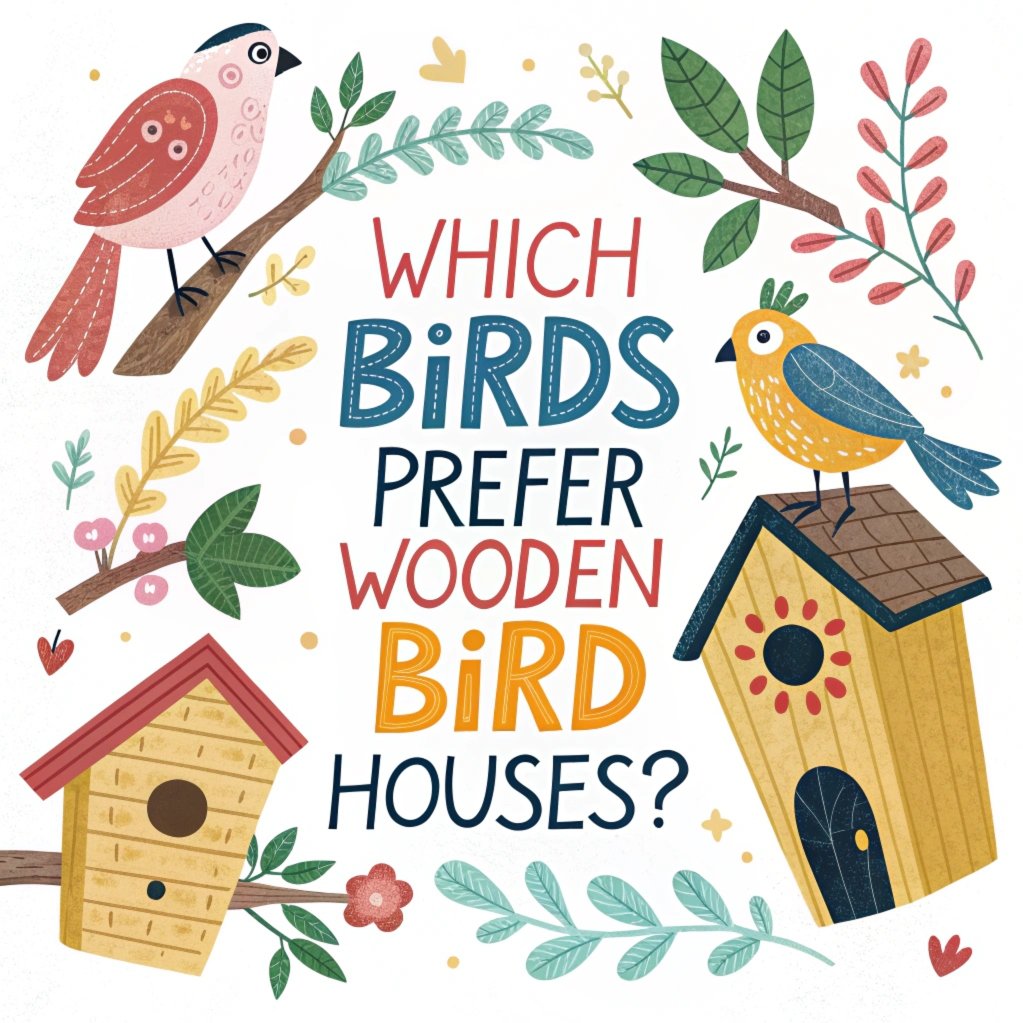
Tree Swallows are elegant birds that readily accept wooden bird houses, especially when placed near open areas or water bodies. These birds prefer houses with dimensions similar to those used for bluebirds: a 4×4 inch floor and a depth of 8-12 inches.
The entrance hole should be 1.5 inches in diameter. Tree Swallow houses are best positioned 4-6 feet high in open areas, ideally near water sources where these aerial insectivores can hunt.
Unlike some other species, Tree Swallows are less particular about the exact placement of their houses and can tolerate houses placed in more exposed locations.
The natural insulation properties of wood make it an ideal material for Tree Swallow houses, helping to regulate temperature during the nesting season.
Nuthatches: Upside-Down Birds with a Right-Side-Up Love for Wooden Houses
Nuthatches, including White-breasted and Red-breasted species, are quirky birds known for their ability to climb headfirst down tree trunks.
These birds also have a strong affinity for wooden bird houses. Nuthatch houses should have a 4×4 inch floor and a depth of 8-10 inches.
The entrance hole size varies slightly between species, with 1.25 inches suitable for White-breasted Nuthatches and 1.125 inches for Red-breasted Nuthatches.
These houses should be placed 5-15 feet high, preferably on or near tree trunks. Nuthatches appreciate houses with rough interior walls, which mimic the texture of natural tree cavities and allow for easier movement within the nest box.
Woodpeckers: Cavity Creators with an Appreciation for Ready-Made Homes
While woodpeckers are known for creating their own cavities, several species will readily use wooden bird houses. Downy Woodpeckers, Hairy Woodpeckers, and Northern Flickers are among the most likely to occupy man-made structures.
Woodpecker houses vary in size depending on the species, but generally require larger dimensions than those for smaller songbirds.
For example, a Downy Woodpecker house should have a 4×4 inch floor and be 8-10 inches deep, while a Northern Flicker house needs a 7×7 inch floor and 18 inches of depth. The entrance hole sizes also vary, ranging from 1.25 inches for Downy Woodpeckers to 2.5 inches for Northern Flickers.
Woodpecker houses should be mounted 5-20 feet high on tree trunks or sturdy poles. These birds appreciate a layer of wood chips or sawdust at the bottom of the house to mimic the conditions of a natural cavity.
Purple Martins: Colonial Nesters with a Taste for Wooden Apartments
Purple Martins are unique among North American songbirds in their preference for colonial nesting. While they often use multi-compartment houses or gourds, wooden structures remain a popular choice for these gregarious birds.
Purple Martin houses should feature multiple compartments, each measuring about 6x6x6 inches. The entrance holes should be 2.125 inches in diameter and placed 1-2 inches above the floor. These houses are typically mounted on tall poles, 15-20 feet high, in open areas near water.
The use of wood for Purple Martin houses is beneficial as it provides natural insulation and helps regulate temperature within the colony. Many Purple Martin enthusiasts prefer wooden houses for their durability and ease of maintenance.
Screech Owls and Other Small Owls: Nocturnal Residents of Wooden Abodes
Several species of small owls, including Eastern Screech Owls and Western Screech Owls, will readily use wooden bird houses. These nocturnal birds require larger houses than most songbirds, typically with a floor size of 8×8 inches or larger and a depth of 12-15 inches.
The entrance hole should be about 3 inches in diameter and placed near the top of the box. Owl houses are best mounted 10-20 feet high on trees or poles in wooded areas or at the edge of forests.
The use of wood for owl houses is particularly important as it provides excellent insulation, crucial for these year-round residents. Many owl species will use these houses not only for nesting but also for roosting throughout the year.
Kestrels and Other Small Raptors: Predators with a Penchant for Wooden Nest Boxes
American Kestrels and other small raptors sometimes use larger wooden bird houses or nest boxes. Kestrel houses typically have a floor size of 8×8 inches or larger and a depth of 12-15 inches. The entrance hole should be about 3 inches in diameter.
These houses are usually mounted 10-30 feet high on poles or trees in open areas or at the edge of fields. The use of wood for raptor houses is beneficial as it provides insulation and helps regulate temperature.
Wooden houses can also be easily modified with additional features such as perches or predator guards to suit the specific needs of these birds.
Wood Ducks: Aquatic Birds with a Surprising Affinity for Wooden Houses
Wood Ducks are unique among waterfowl in their willingness to use man-made nesting structures, including wooden bird houses.
Wood Duck houses are significantly larger than those for songbirds, typically measuring 12×12 inches in floor size and 24 inches in depth. The entrance hole should be 4×3 inches and elliptical in shape to prevent predators from entering.
These houses are usually mounted 6-30 feet high on poles over or near water, or on trees near water bodies. The use of wood for Wood Duck houses is crucial as it provides insulation and mimics the natural tree cavities these birds would use in the wild.
The Importance of Proper Construction and Placement
Regardless of the species, proper construction and placement of wooden bird houses are crucial for their success. Houses should be built with untreated wood, preferably cedar, cypress, or redwood for their natural resistance to decay.
The wood should be at least 3/4 inch thick to provide adequate insulation. Proper ventilation and drainage are essential, typically achieved through small holes or gaps near the roof and floor.
The roof should overhang the entrance hole to prevent rain from entering, and should be covered with water-resistant material.
Placement of the houses should consider the specific needs of each species, including height, direction, and proximity to food sources and natural habitats.
Maintaining Wooden Bird Houses for Long-Term Success
Regular maintenance of wooden bird houses is crucial for their longevity and continued use by birds. Houses should be cleaned out annually, typically in late winter or early spring before the nesting season begins.
Any old nesting material, debris, or parasites should be removed. The interior and exterior of the house can be lightly sanded to remove any sharp edges or splinters.
While it’s generally best to leave wooden houses unpainted, a light coat of linseed oil can help protect the exterior from weathering.
Regularly check the houses for any signs of damage or wear, such as loose boards or enlarged entrance holes, and make repairs as needed. Proper maintenance ensures that wooden bird houses remain safe and attractive to their avian occupants year after year.
FAQs
What makes wooden bird houses better than those made from other materials?
Wooden bird houses are preferred by many bird species because they closely mimic natural tree cavities. Wood provides excellent insulation, helping to regulate temperature and humidity inside the nest. It’s also a breathable material, allowing for proper ventilation. Unlike metal or plastic, wood doesn’t overheat in direct sunlight, making it safer for birds and their offspring.
How often should I clean out a wooden bird house?
It’s recommended to clean out wooden bird houses at least once a year, typically in late winter or early spring before the nesting season begins. This helps remove old nesting material, debris, and potential parasites. Some birds, like bluebirds, may have multiple broods in a season, so cleaning between broods can be beneficial.
Can I paint a wooden bird house?
While it’s best to leave wooden bird houses unpainted to maintain their natural appearance and breathability, you can use earth-tone stains or linseed oil to protect the wood from weathering. If you do paint, use non-toxic, water-based paints in muted colors, and only paint the exterior, leaving the interior natural.
How long do wooden bird houses typically last?
With proper construction and maintenance, a wooden bird house can last 5-10 years or more. Houses made from durable woods like cedar or redwood may last even longer. Regular maintenance, including annual cleaning and repairs, can significantly extend the life of a wooden bird house.
Are there any birds that won’t use wooden bird houses?
While many cavity-nesting birds readily use wooden houses, some species prefer natural cavities or have specific nesting requirements that are difficult to replicate in man-made structures. For example, some woodpeckers prefer to excavate their own cavities, and certain ground-nesting birds won’t use elevated houses at all.

Hello, I’m Amelia White, the founder of birdsfanatic.com. As a lifelong bird enthusiast and spiritual seeker, I’ve always been fascinated by the mystical connections between birds and the human experience. On this site, I share my knowledge and insights into the symbolic meanings and spiritual significance of various bird species, exploring their roles in mythology, folklore, and cultural traditions. Join me on this journey into the world of birds, where we’ll discover the hidden wisdom and guidance that these magnificent creatures have to offer.

